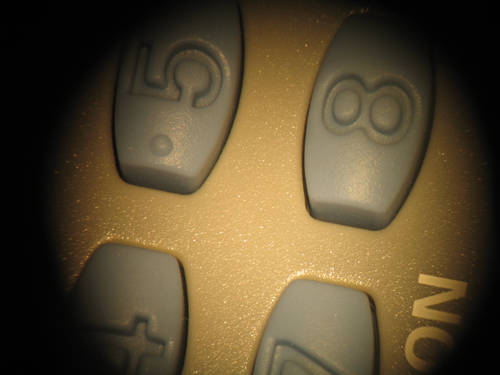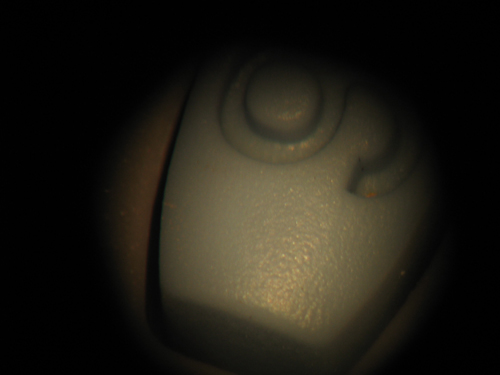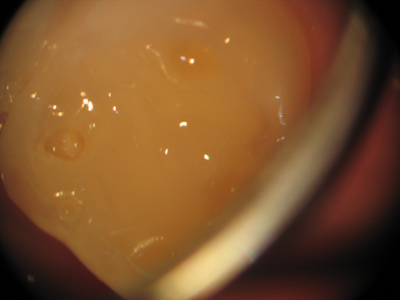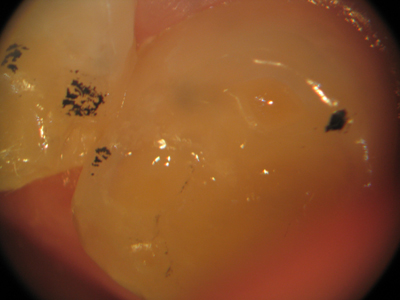Forums › Other Lasers › Misc. Laser Forum › Microscope tips.
- This topic is empty.
-
AuthorPosts
-
dkimmelSpectatorGlenn I gave it a try as you suggested. It seems my aim is a bit better. It is just that the even the lower maginification is just too much. Not sure why you need such high mag.


jaynelsonSpectatorI’m just glad you didn’t show the photo through the scope!
Jay Nelson
Lutz, FL
Graeme MilicichSpectatorNow that view would give your ego a great boost!!!
Glenn van AsSpectatorDavid , the Seiler scope has such a bad lighting system I am surprised you didnt get your hands all wet. I was going to take a picture myself with my Global scope in a similar fashion……..
But gosh the water was cold, and deep too!!
GRIN
You really make me laugh sometimes…….
Good one
Glenn
whitertthSpectatorGavid,
I assume u have that on 13x right? One question, what do u do in the bedroom? Do u have it on a ceiling mount or a wall mount…Just curious…..
Glenn van AsSpectatorRon , he actually has mulitple mounts and just carries the optics around the house. He has one in the workshop to get the splinters out of his ……..
Another in the library to read the fineprints in his laser warrantee contracts.
One in the kitchen to accurately measure for those christmas recipes…
We saw in the bathroom………shameless.
Now the bedroom, well that one had to be a ceiling mount because the trampoline on the floor , the mirrors on the walls and ceilings and the trapeze…..well you know how crowded our operatories are………
Take care
Happy holidays to all………
Glenn
AnonymousGuestHow about some photography help?
Here are pictures w/ G5

Is this what I should expect? or are there settings to get the target to fill the whole screen and not have to cut and paste to a new picture?
Adapter said to use smallest F stop but not much else.
Any suggestions?
Thanks
Glenn van AsSpectatorWhat scope and what setting were you using.
What ISO, what adapter, what light bulb in the scope.
THere is a TON of information to taking great photos. Its an art in itself…….
There is alot of good information on <a href="http://www.xmount.com
Glenn” target=”_blank”>http://www.xmount.com
Glenn
smlugerSpectatorRon,
One thing I would recommend without being there is to try seting your camera to infinty. The other is to use the Zoom on your camera to match what you are seeing on the monitor to what you are seeing on your led screen. I would also open up my f-stops to a smaller number. Digital-still cameras require much more light than video cameras which require low lux.
You have a dual purpose beam-splitter which has an 80-20 port on one side for the video camera where 80% goes to your eyes and 20 % goes to the video camera. On the other side of your beamsplitter, there is another port with a 50/50 split which gives more light to the G-5 Digital Camera. That is the side to mount your digital camera on. You might have this reversed.I hope this gets you on your way.
(Edited by smluger at 7:28 am on Dec. 25, 2004)
smlugerSpectator” You have to see what to treat, before you can treat what you see.”
One thing I would recommend without being there is to try setting your camera to infinty. The other is to use the Zoom on your camera to match what you are seeing on the monitor to what you are seeing on your led screen. I would also open up my f-stops to a smaller number. Digital-still cameras require much more light than video cameras which require low lux.
You have a dual purpose beam-splitter which has an 80-20 port on one side for the video camera where 80% goes to your eyes and 20 % goes to the video camera. On the other side of your beamsplitter, there is another port with a 50/50 split which gives more light to the G-5 Digital Camera. That is the side to mount your digital camera on. You might have this reversed.I hope this gets you on your way.
(Edited by smluger at 7:28 am on Dec. 25, 2004)
[/quote](Edited by smluger at 7:33 am on Dec. 25, 2004)
AnonymousGuestGetting a little closer on the images-



AnonymousGuestSnowed out today, so time to play!

AnonymousGuestBTW, that’s the aiming beam from a FRVP NDYAG in a cleaned out canal.
Glenn on the roadSpectatorNeat stuff Ron………didnt notice this.
Hey a question to those of you like Ron and David using scopes. Do you find it beneficial compared to your loupes for the laser, and if you look at the operative site with your loupes and the scope at the same mag, does the light (coaxial shadow free lighting) and the increased diameter of the field of magnification provide you more information with the microscope than the set of loupes.
I ask because it does seem that more people using lasers are contemplating scopes and I have to present a hands on workshop at the ALD with Scott Benjamin on magnification alternatives and the laser.
Glenn
smlugerSpectatorGlenn-on- the road,
I work with a lot of laser users with the scope. As a matter of fact, next weekend, I’m teaching a course with Ron Kaminer in NY who runs a Biolase Taining Center. I’m going to be installing and teaching Ron Schalter the end of this month.
There is definitely a difference at the same mag with scope. Not saying that loupes are bad, but the optics are designed differently.
If you look at loupes closely, they depend on a principle called convergence where the angle of the lenses intersect someplace in the field called the working distance. At this intersection is where the ideal focus takes place.
A microscope on the other hand has its optics set for infinity and convergence is not a factor. The working distance is set by the objective lens, and in dentistry, ususally 250 mm (10 in) is recommended unless you are exceptionally tall or exceptionally short. In those cases we use a different objective lens.
Many loupe users experience a discomfort when they first start using loupes untill they acclimate to it. Often the new users complain of nausea or a seasick type of feeling. This usually doesn’t happen with a scope.
Beyond the wideer field of view, deeper depth of field (both signoficant). and superior through the lens lighting, the ability to switch back and forth between magnification settings is invaluable. I can’t say enough about that
Under 8x and 13x, and even 20x magnification, you are actually seeing the ablation of tissue. You are actually gently guiding the tip as you see see the interface of the action between the laser and the tissue. This precision that you are able to achieve is so far superior that its no less than astounding.
Just like Dave said, he didn’t know why he waited so long to try a scope. In my 12 years selling scopes and watching comments on Dental Town’s web site, Roots, and LDF, you never hear someone complaining that they regretted purchasing a scope. There are some people who have regretted other purchases, be it a laser, Cerec, Unit etc.. No complaints about a scope being bad.
The main thing that determines the effectiveness in microscopes is the user of the scope. Training is essential. One has to invest in themselves as well as investing in the machine.
I would heartily recommend you getting training at one of the microscope training centers in the country, or getting Glenn van As’s DVD or having me train you.
I am the only person in the country providing hands-on microscope training, in your office, on your own scope, with your assistant, with your patients. This is helpful because we can apply the techniques as they relate to your working envrionment.
You will find that using a microscope is not intuitive. It isn’t like using loupes. It’s not hard, but it’s different and has to be learned.
Make the decision to get a microscope, commit yourself to training, and you will never regret it.
Stefan M. Luger
-
AuthorPosts
